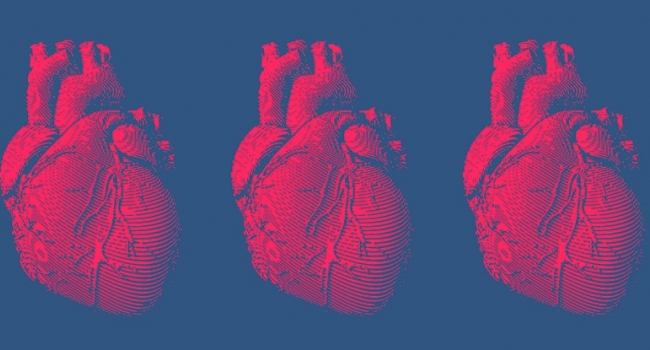- Latest news▼
-
18:00, April 18 Daily Mail: Elderly woman in China gets infected with brain-eating amoeba

-
14:19, April 18 Obesity: exercising before breakfast helps you lose weight faster

-
10:42, April 18 The Conversation: childhood trauma can cause pathological hoarding

-
08:37, April 18 Daily Mail: Satiating food reduces cravings for sweets, nutritionist says

-
18:22, April 17 First Armenian-German Conference entitled “Heart Failure Spring School”

-
08:38, April 17 Why do kids usually recover from COVID-19 more easily than adults?

-
14:37, April 16 Daily Mail: intermittent fasting is not suitable for children and women before their periods

-
16:41, April 15 Cell: in carriers of defective BRCA2 gene, sugar consumption increases cancer risk

-
15:04, April 15 305 cases of measles recorded in Armenia so far in 2024

-
14:38, April 15 Food and Environmental Virology: tea contributes to effective coronavirus control

-
12:41, April 15 Daily Mail: vitamin A, B3 and E supplements can be dangerous

-
10:56, April 15 Diabetes Care: evening physical activity is good for the heart

-
08:27, April 15 Women are more susceptible to blood loss and death during bypass surgery than men, researchers say

-
18:42, April 13 WHO: Nigeria pioneers revolutionary meningitis vaccine

-
16:43, April 13 One-third of women experience menstruation-related migraines, most often during premenopause - study

All materials
One day we could actually regenerate human hearts

We could one day develop a process to regenerate tissue in the human heart, according to new research, by borrowing a technique from an unlikely source – a muscle-less and heart-less starlet sea anemone.
The Nematostella vectensis creature has the ability to regenerate as several different organisms if it's chopped up into pieces, and scientists think this biological superpower could teach us how to stimulate regenerative healing in human hearts.
Researchers from the University of Florida came across the starlet sea anemone when looking at the evolutionary origin of muscle cells, like the ones found in our heart – and the sea creature has genes known to help form heart cells in humans and other animals.
"Our study shows that if we learn more about the logic of how genes that give rise to heart cells talk to each other, muscle regeneration in humans might be possible," says lead researcher Mark Martindale.
In other words if we understand more about how these genes work together to program heart cells, then we might be able to do our own programming in the future.
When analysing the "heart genes" in the sea anemone, scientists found a difference in the way they interact compared with genes in other animals.
Specifically there's no "lockdown loop" – no instructions to the genes to stay switched on for the lifetime of the animal, instructions which stop cells becoming other types of cell or being used for other functions.
In the human heart, natural regeneration is limited to a very slow replacement of cardiac muscle cells, which isn't enough to fight off damage and disease. Any hits our hearts take are there to stay and usually cause a build-up of scar tissue.
However, without that lockdown loop, the sea anemone cells are free to turn into other types of cells and regenerate body parts if needed.
The research also backs up an existing hypothesis that the first animal muscle cells were very heart-like, evolving from the gut tissue of a creature like Nematostella vectensis.
While the sea anemone doesn't have a heart, its body moves in a pulsing, wave-like way, similar to a heartbeat.
"The idea is these genes have been around a long time and preceded the twitchy muscles that cover our skeleton," says Martindale.
So, if we can tweak our own muscle cells to follow the lead of the starlet sea anemone cells, regenerative healing in the heart and other body parts could be possible. That's still a long way off, but we now have a few extra clues about how it might be achieved.
In a bid to beat heart disease and damage caused by heart attacks, scientists are exploring a wide range of options for repairing the most crucial of organs, including growing heart tissue from spinach.
If we were able to work out a way to tease heart cells to regenerate, it's estimated that millions of people could be helped each year, and any progress towards that goal has to be something to get excited about.
The research has been published in PNAS.
Follow NEWS.am Medicine on Facebook and Twitter
- Video
- Event calendar
- Archive
- Most read
month
week
day
- Pediatrics: Hypoglossal nerve stimulation implant helps with sleep apnea 1350
- Health minister: Simulation educational center will be created, assisted reproductive technology capacity will increase in Armenia 1307
- WHO: Nigeria pioneers revolutionary meningitis vaccine 1160
- One-third of women experience menstruation-related migraines, most often during premenopause - study 1128
- Women are more susceptible to blood loss and death during bypass surgery than men, researchers say 858
- Food and Environmental Virology: tea contributes to effective coronavirus control 842
- Daily Mail: vitamin A, B3 and E supplements can be dangerous 841
- Cell: in carriers of defective BRCA2 gene, sugar consumption increases cancer risk 810
- 305 cases of measles recorded in Armenia so far in 2024 804
- Diabetes Care: evening physical activity is good for the heart 793
- Daily Mail: intermittent fasting is not suitable for children and women before their periods 620
- First Armenian-German Conference entitled “Heart Failure Spring School” 409
- Why do kids usually recover from COVID-19 more easily than adults? 237
- The Conversation: childhood trauma can cause pathological hoarding 223
- Obesity: exercising before breakfast helps you lose weight faster 219
- Find us on Facebook
- Poll





